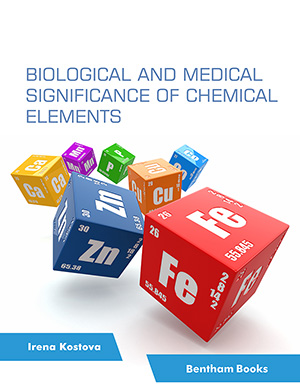Abstract
Background: Hepatocellular carcinoma (HCC) is inflammation-associated cancer with high incidence and poor prognosis. In the last decade, immunotherapy has become an important strategy for managing HCC.
Objective: This study aimed to establish an immune-related gene signature for predicting prognosis and immunotherapy response in HCC.
Methods: We identified immune-related differentially expressed genes (IRDEGs) based on The Cancer Genome Atlas (TCGA) database and the Immunology Database and Analysis Portal (ImmPort) database. The weighted gene co-expression network analysis (WGCNA) and Cox proportional hazard model were utilized to determine hub immune-related genes (IRGs). The TIDE tool and R package pRRophetic were used to assess the correlation between the immune-related gene signature and the clinical responses to immunotherapy and chemotherapy.
Results: By using WGCNA combined with Cox proportional hazard model, PRC1, TOP2A, TPX2, and ANLN were identified as hub IRGs. The prognostic value of the newly developed gene signature (IRGPI) was demonstrated in both the TCGA database and the Gene Expression Omnibus (GEO) database. The TIDE tool showed that the high- and low-IRGPI groups presented significantly different tumor immune microenvironment and immunotherapy responses. Furthermore, the high-IRGPI group also had significantly lower chemoresistance to cisplatin than the low-IRGPI group.
Conclusion: The IRGPI is a tool for predicting prognosis as well as responsiveness to immunotherapy and chemotherapy in HCC.
Keywords: Hepatocellular carcinoma, immune-related gene, immunotherapy, prognosis, tumor microenvironment, weighted gene co-expression network analysis.
[http://dx.doi.org/10.6004/jnccn.2017.0059]
[http://dx.doi.org/10.1016/j.jhep.2018.03.019] [PMID: 29628281]
[http://dx.doi.org/10.1016/j.ctrv.2019.101946] [PMID: 31830641]
[http://dx.doi.org/10.1186/1471-2105-9-559] [PMID: 19114008]
[http://dx.doi.org/10.3389/fgene.2020.00153] [PMID: 32180800]
[http://dx.doi.org/10.1007/s12026-014-8516-1] [PMID: 24791905]
[http://dx.doi.org/10.1093/nar/gkj021]
[http://dx.doi.org/10.1093/nar/gkw1092] [PMID: 27899662]
[http://dx.doi.org/10.1093/nar/gkw1052] [PMID: 27899615]
[http://dx.doi.org/10.1093/nar/gkx1013] [PMID: 29087512]
[http://dx.doi.org/10.1038/nmeth.3337] [PMID: 25822800]
[http://dx.doi.org/10.1093/nar/gku936] [PMID: 25300484]
[http://dx.doi.org/10.1371/journal.pone.0107468] [PMID: 25229481]
[http://dx.doi.org/10.3390/ijms18020405] [PMID: 28216578]
[http://dx.doi.org/10.1136/gutjnl-2015-310625] [PMID: 26941395]
[http://dx.doi.org/10.7150/jca.17640] [PMID: 28382142]
[http://dx.doi.org/10.1186/1479-5876-11-36] [PMID: 23398928]
[http://dx.doi.org/10.1155/2015/381602] [PMID: 25695068]
[http://dx.doi.org/10.1002/ijc.23968] [PMID: 19003983]
[http://dx.doi.org/10.3390/ijms151018148] [PMID: 25302620]
[http://dx.doi.org/10.1007/s10620-015-3730-9] [PMID: 26025609]
[http://dx.doi.org/10.3892/ijmm.2019.4371] [PMID: 31638175]
[http://dx.doi.org/10.2147/OTT.S61442] [PMID: 24966688]
[http://dx.doi.org/10.1042/BST0360439] [PMID: 18481976]
[http://dx.doi.org/10.1007/s11010-014-2200-6] [PMID: 25223638]
[http://dx.doi.org/10.1053/j.gastro.2017.12.013] [PMID: 29274368]
[http://dx.doi.org/10.18632/aging.101510] [PMID: 30103211]
[http://dx.doi.org/10.1038/ncomms12150] [PMID: 27381735]
[http://dx.doi.org/10.1158/0008-5472.CAN-08-4625] [PMID: 19549903]
[http://dx.doi.org/10.1111/hepr.12831]
(b)Mizukoshi, E.; Yamashita, T.; Arai, K.; Terashima, T.; Kitahara, M.; Nakagawa, H.; Iida, N.; Fushimi, K.; Kaneko, S. Myeloid-derived suppressor cells correlate with patient outcomes in hepatic arterial infusion chemotherapy for hepatocellular carcinoma. Cancer Immunol. Immunother., 2016, 65(6), 715-725.
[http://dx.doi.org/10.3389/fimmu.2019.00893] [PMID: 31068952]
[http://dx.doi.org/10.1016/j.addr.2015.07.007] [PMID: 26278673]
[http://dx.doi.org/10.1016/j.ccell.2018.01.011]
(b)Shintani, Y.; Fujiwara, A.; Kimura, T.; Kawamura, T.; Funaki, S.; Minami, M.; Okumura, M. IL-6 secreted from cancer-associated fibroblasts mediates chemoresistance in NSCLC by increasing epithelial-mesenchymal transition signaling. J. Thorac. Oncol., 2016, 11(9), 1482-1492.
[http://dx.doi.org/10.1186/s13045-019-0782-x] [PMID: 31547836]
[http://dx.doi.org/10.1158/2326-6066.CIR-18-0436]
(b)Bi, G.; Chen, Z.; Yang, X.; Liang, J.; Hu, Z.; Bian, Y.; Sui, Q.; Li, R.; Zhan, C.; Fan, H. Identification and validation of tumor environment phenotypes in lung adenocarcinoma by integrative genome-scale analysis. Cancer Immunol. Immunother., 2020, 69(7), 1293-1305.






























